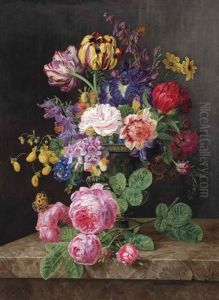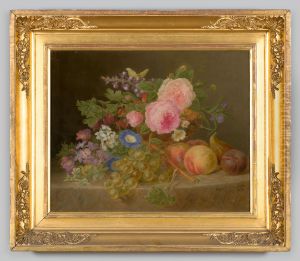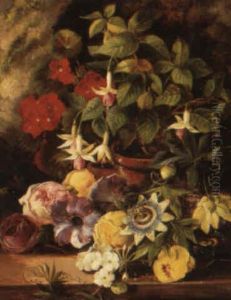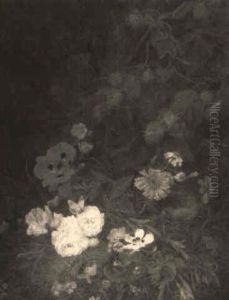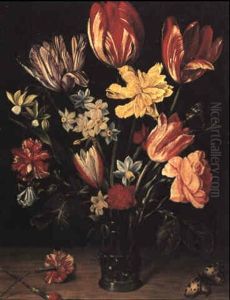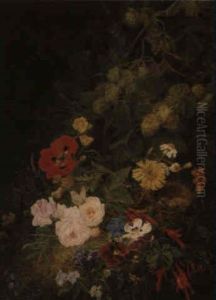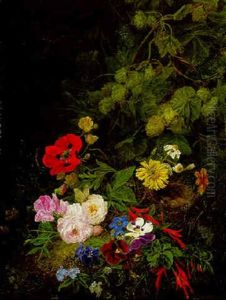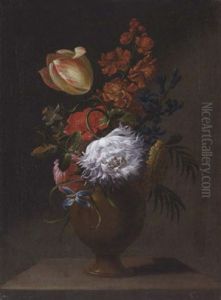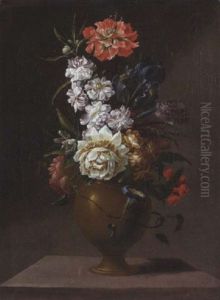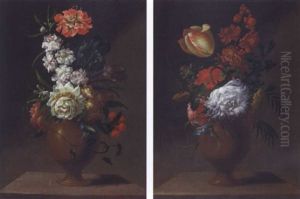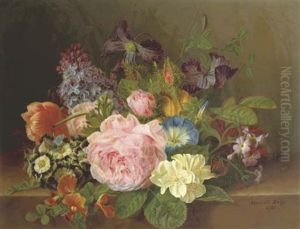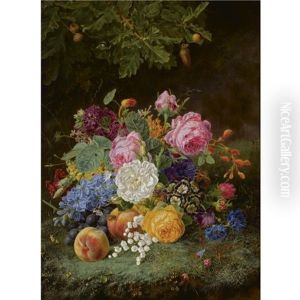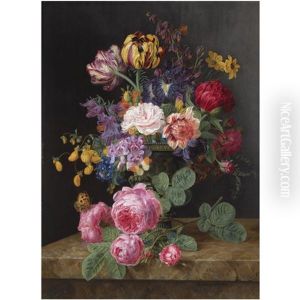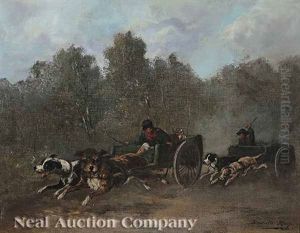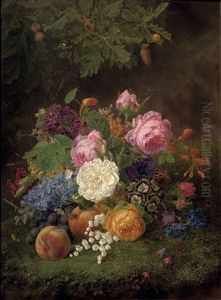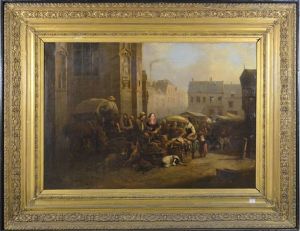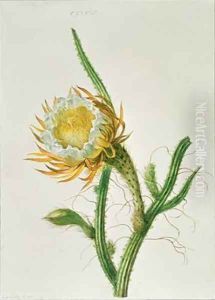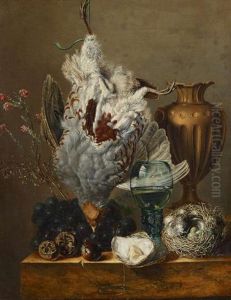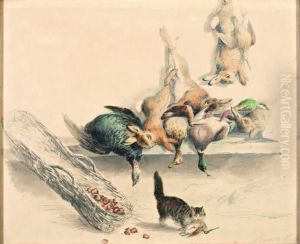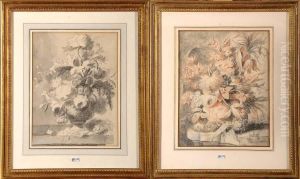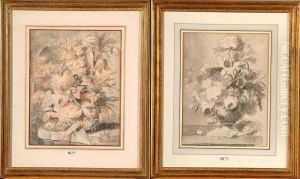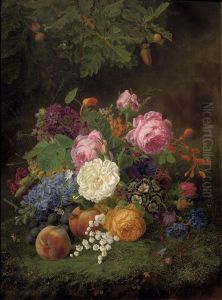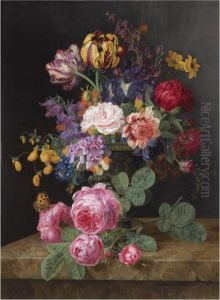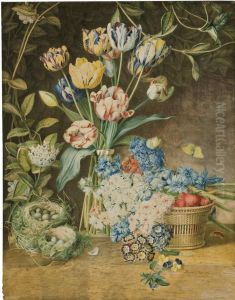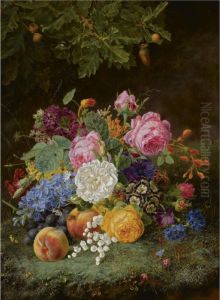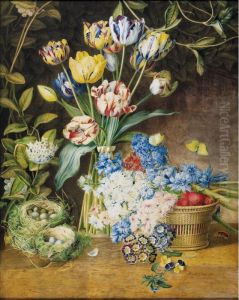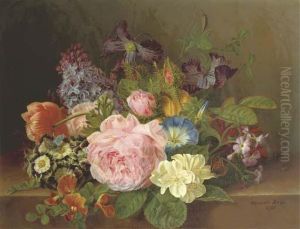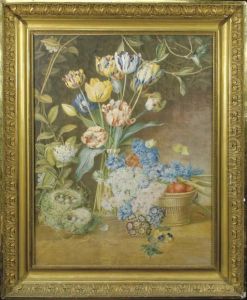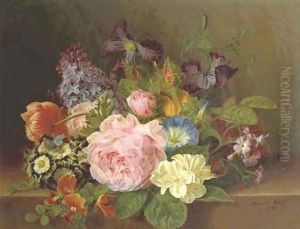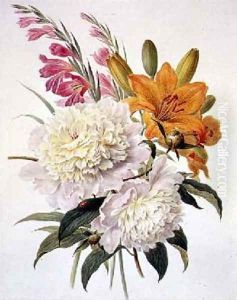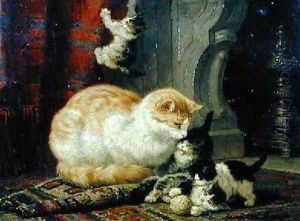Henriette Gertruide Knip Paintings
Henriette Gertruide Knip was a Dutch artist born on June 31, 1783, in 's-Hertogenbosch, Netherlands. She was part of a family of artists; her father, Nicolaas Frederik Knip, was an art dealer and amateur painter, and her mother, Pauline Rifer de Courcelles, was also an artist. She had a brother, Josephus August Knip, who was a notable painter as well. Henriette's artistic heritage greatly influenced her decision to pursue a career in art.
Henriette Knip is most renowned for her detailed and delicate watercolor paintings of flowers and animals. Her work reflects the Dutch tradition of precise botanical illustration, which was highly valued in the 18th and 19th centuries. She was trained by her mother and later by other artists, including the landscape painter Gerard van Spaendonck, who was a significant figure in botanical art.
Knip's work was well-received in her time, and she exhibited at various art shows and salons, building a reputation as a skilled artist. Her paintings were characterized by their vibrant colors and the fine attention to detail, which brought her subjects to life on the canvas. Despite the acclaim she received, Henriette faced the challenges of being a female artist in a male-dominated profession, which often meant her contributions were overshadowed by those of her male counterparts.
Throughout her career, Henriette struggled with financial difficulties, and her personal life was marked by a troubled marriage, which eventually ended in divorce. Despite these hardships, she continued to work and exhibit her art. Unfortunately, the latter part of her life was not well documented, and as a result, her later works and contributions to the art world received less attention.
Henriette Gertruide Knip passed away on July 28, 1842, in Berlicum, Netherlands. Her legacy as a botanical artist remains, and her paintings can be seen as a testament to the skill and dedication of women artists in the early 19th century. Knip's works are held in various collections and museums, serving as an inspiration to those interested in the intersection of art and natural history.
